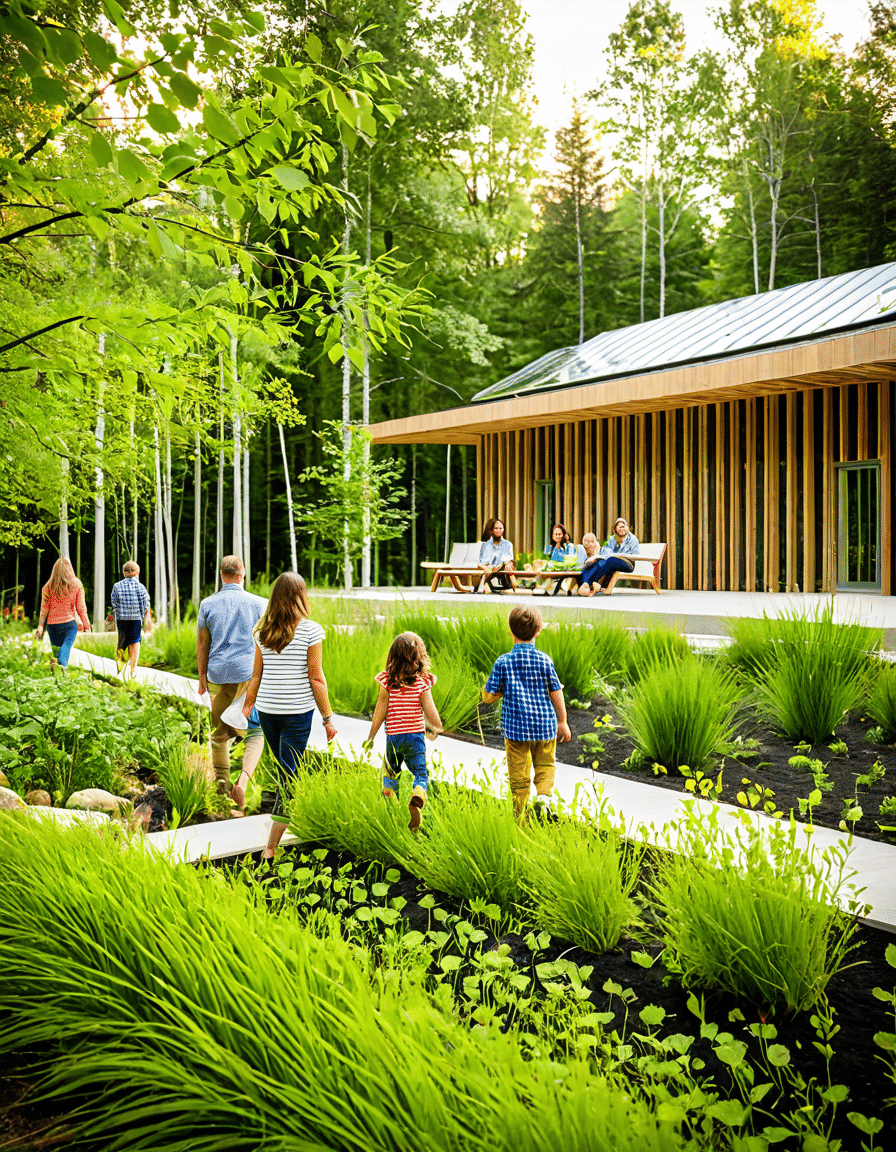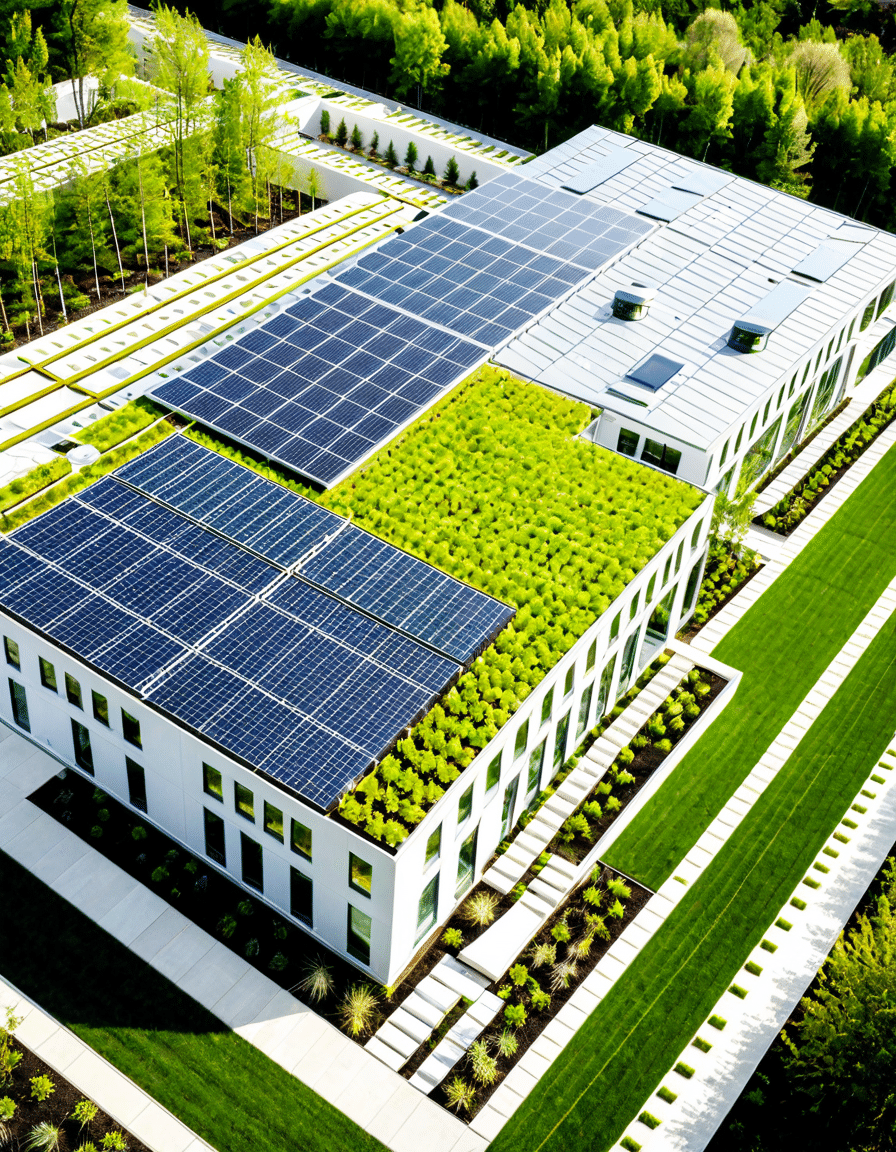As the world continues to grapple with climate change, the importance of LEED certification is more significant than ever. The Leadership in Energy and Environmental Design (LEED) certification, developed by the U.S. Green Building Council, presents a roadmap for environmentally sustainable construction practices. For builders and homeowners alike, pursuing this certification can lead to multiple benefits. Let’s dive into the seven key benefits of LEED certification for environmentally conscious builders and discover how it promotes a sustainable future.
7 Key Benefits of LEED Certification for Environmentally Conscious Builders

1. Enhanced Energy Efficiency
One of the most substantial benefits of LEED certification is enhanced energy efficiency. LEED-certified buildings often incorporate innovative technologies that lead to lower energy consumption. A prime example is the Bullitt Center in Seattle. Often dubbed one of the greenest commercial buildings globally, it boasts solar panels, a green roof, and advanced HVAC systems that significantly cut down energy use. Over time, the initial investment in these technologies pays off in the form of reduced utility bills and lower operating costs.
2. Increased Property Value
Did you know that LEED certification can actually boost your property’s value? Studies show that LEED-certified homes sell for a premium of about 7% compared to non-certified properties. A report from the National Association of Real Estate Investment Trusts (NAREIT) confirms this trend, as buyers increasingly favor homes with sustainable features. This uptick in property values reflects a growing demand for energy-efficient and eco-friendly spaces that promise lower operating costs.
3. Access to a Broader Market
In a market saturated with choices, having LEED certification can give builders a substantial edge. Millennials and younger generations are leaning towards sustainable living; they actively seek out homes that align with their environmental beliefs. For instance, PulteGroup has successfully tapped into this market by offering LEED-certified homes, making them appealing to eco-conscious buyers. With LEED certification, builders can make their projects more attractive to this critical demographic.
4. Government Incentives and Financing Options
Getting serious about sustainability often comes with perks! Many local governments offer various incentives for developing LEED-certified buildings. These can range from tax rebates to expedited permitting processes. In New York City, for example, the NYC Energy Efficiency Corporation provides financing options for LEED-certified buildings. Additionally, certain lenders may offer better mortgage rates for these green properties, making them easier to finance for buyers.
5. Improved Indoor Air Quality
Healthy indoor environments are crucial for occupant well-being, and LEED certification plays a significant role here. The certification requires effective ventilation, natural light, and non-toxic materials, contributing to better indoor air quality. Take the well-known company Interface, which has reported that employees in LEED-certified offices experience higher productivity and lower instances of sick days. When you prioritize health, everyone benefits!
6. Encouragement of Sustainable Practices
Gaining LEED certification is more than just meeting a set of standards; it inspires a mindset of sustainability. Builders and architects are often encouraged to adopt principles of permaculture, which emphasizes the symbiosis between human habitation and the natural environment. For example, the Edible Schoolyard project in Berkeley, California, exemplifies these concepts. It utilizes sustainable design and serves as an educational space, teaching students about the importance of caring for their environment.
7. Corporate Social Responsibility and Brand Strengthening
Companies that focus on LEED certification often find themselves enhancing their brand image. Prioritizing sustainability aligns with their corporate values and serves as a strong message to consumers. Take Google, for instance, which aims to run on renewable energy completely. Incorporating LEED-certified buildings into their operations reinforces their commitment to sustainability, proving beneficial in marketing narratives focused on innovation and societal responsibility.

The Role of LEED Certification in Promoting Sustainable Communities
LEED certification goes beyond just benefiting individual buildings; it plays a crucial role in nurturing sustainable communities as a whole. When neighborhoods feature more LEED-certified structures, it fosters a culture of environmental stewardship and resilience. This ripple effect encourages residents to adopt greener lifestyles, ultimately elevating community wellness and environmental quality.
The Possum Trot Approach: Embracing Sustainable Living
A fantastic example of how LEED principles can blend with nature is the “Possum Trot” community in New Zealand. This innovative project prioritizes sustainable living and permaculture practices, encouraging residents to engage meaningfully with their surroundings. By drawing inspiration from such models, we can envision community spaces that are not only functional but also ecologically harmonious, enhancing the quality of life for residents.
A Vision for the Future
LEED certification isn’t just a trend; it’s a guiding light steering the construction industry towards a greener future. As builders increasingly commit to these sustainable standards, consumer preferences will likely shift towards homes that prioritize energy efficiency and health. By embracing this movement, we actively shape a sustainable urban landscape, reflecting our collective responsibility to preserve the planet for future generations.
In summary, LEED certification serves as more than just a checklist for builders and developers. It’s a commitment to creating sustainable spaces where communities can thrive—both environmentally and socially. By integrating these principles into our living and working spaces, we take significant strides towards a healthier planet, one green building at a time. This is indeed a sustainable legacy worth building for those who come after us!
If you’re keen on learning more about real estate, consider exploring related topics such as How much do Realtors charge To find a rental or discover sustainable areas like Idyllwild, CA. Ultimately, sustainable living is not just beneficial for the planet—it’s also good for business and community well-being. Let’s get building a brighter future!
LEED Certification: Benefits for a Sustainable Future
What is LEED Certification?
LEED certification stands for Leadership in Energy and Environmental Design. It’s not just a fancy badge; it’s a whole new way for buildings to save energy and protect our planet. Did you know that LEED-certified buildings can reduce energy use by as much as 30%? That’s pretty significant! You might recall how folks in Presteigne are increasingly opting for greener choices, much like the advantages LEED brings to the table.
Getting LEED certified involves following a set of standards that encourage sustainable practices during construction and operation. This certification isn’t just trendy; it also appeals to buyers. Modern businesses, much like those that employ the unique concept behind the Santa Claus number, are realizing the value in sustainable spaces, which can lead to higher property values and reduced operating costs.
Interesting Facts About LEED Certification
LEED isn’t just an acronym; it symbolizes a movement! Buildings with this certification help to conserve water and improve indoor air quality, which is vital for our well-being. In places like Idyllwild, CA, environmentally friendly construction is gaining traction, reflecting a broader trend in eco-conscious living. Trees and shrubs in LEED projects can even help absorb carbon dioxide, which contributes significantly to a cleaner atmosphere. Isn’t that something worth celebrating?
Curiously, many LEED-certified buildings also have access to natural light, which studies show can boost productivity and well-being. Talk about a win-win! It’s like wearing a well-tied bowtie — a small detail that makes a big difference! If you’re looking for more eco-friendly ideas for your home or business spaces, you might stumble upon inspiring stories, much like Eleanor Oliphant Is Completely Fine, where success in small endeavors leads to bigger outcomes.
The Broader Implications of LEED Certification
The benefits of LEED stretch beyond just the building. They contribute to local economies and create nice habitats for wildlife. You can catch a glimpse of how these practices play out at community hubs like the Mesa Airport, which is embracing sustainable initiatives to better serve its residents. Likewise, the increasing interest in green building isn’t just a trend for environmentalists—it’s a movement embraced by everyday people and business owners, including Puerto Ricans who yard their communities into greener havens.
So, whether you’re a builder, a buyer, or just curious, remember that LEED certification can lead to a brighter future—not just for buildings, but for everyone involved. A little effort to go green can yield results that sparkle brighter than a split cast on a silver screen, demonstrating that sustainability truly pays off.





